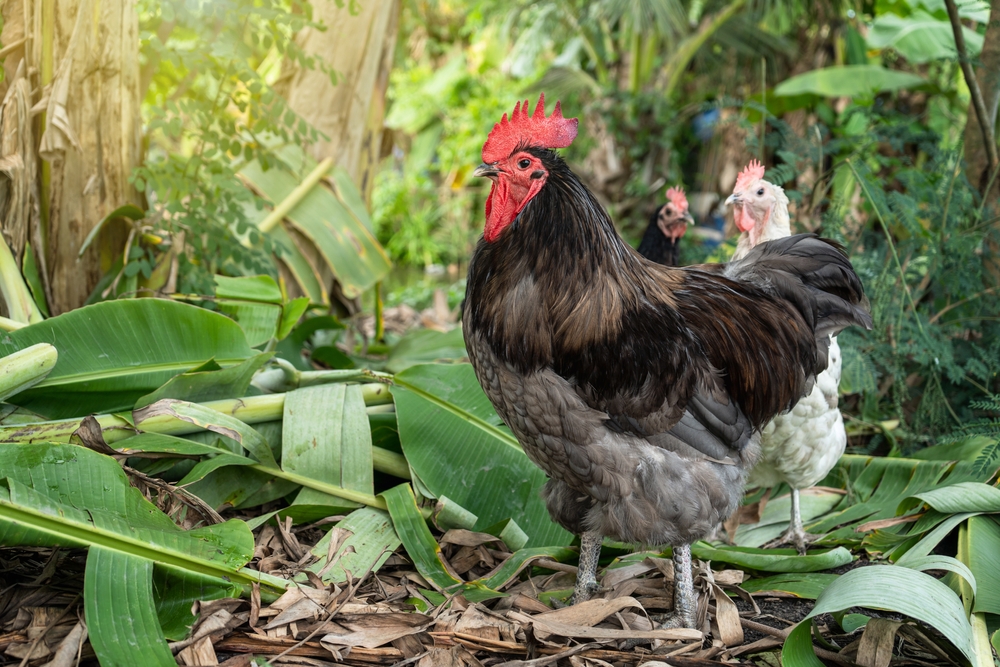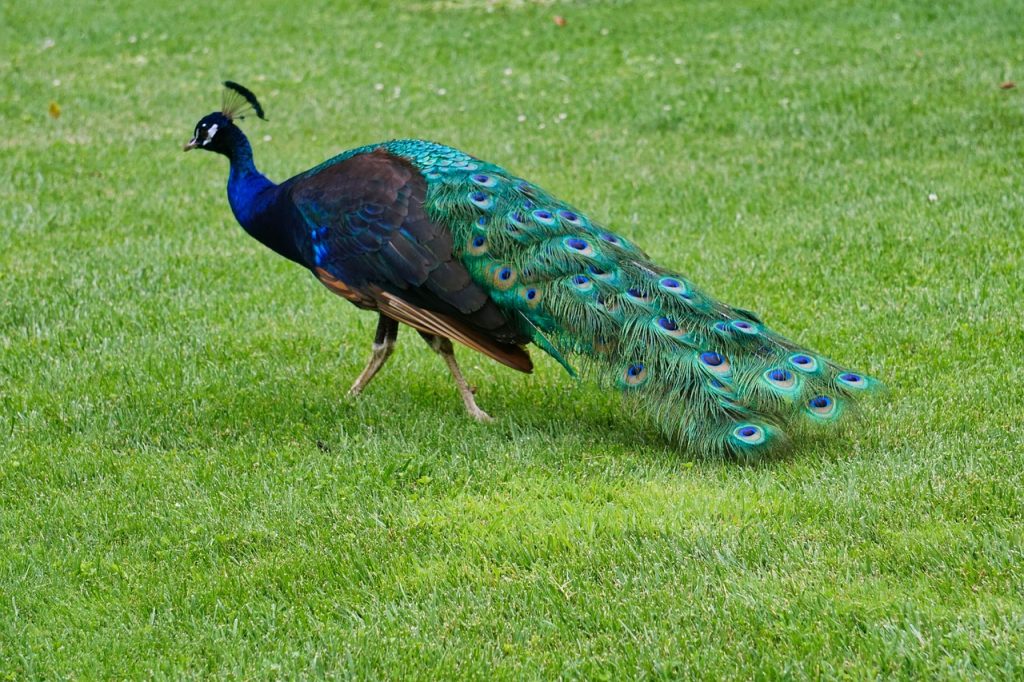The closest relative to the Australorp is the Orpington chicken, particularly the Black Orpington, from which the Australorp was originally developed in Australia. Selective breeding for higher egg production and adaptability to Australian conditions distinguished the Australorp from its Orpington ancestors.
About
The Australorp is a hardy, dual-purpose chicken breed developed in Australia during the early 20th century from Black Orpington stock imported from England. Selective breeding for utility created a bird that excels in both egg productionand meat quality, making it one of the most valued heritage breeds in the poultry world. Its name is derived from “Australian” and “Orpington.”
Australorps are most famous for their record-breaking laying ability—a single hen once laid 364 eggs in 365 days, a world record still celebrated by poultry enthusiasts. Today, they are recognized as excellent layers, producing 250–300 large brown eggs per year under good conditions.
They are medium-to-large birds, with hens weighing about 3 kg (6.5 lbs) and roosters around 3.9 kg (8.5 lbs). The most common and recognized variety is black-feathered with a green-purple iridescent sheen, though blue and white varieties also exist in some countries. Their single comb, red wattles, and dark eyes give them a classic farmyard appearance.
Australorps are gentle, calm, and adaptable, thriving in both free-range and confined setups. They tolerate heat and cold well, making them suitable for a variety of climates. Their docile nature makes them ideal for backyard flocks, especially for families and beginner poultry keepers.
They are good foragers but also do well on a balanced poultry feed. As meat birds, they have a tender, flavorful carcass, though they are primarily prized for their laying capacity.
Australorps are long-lived and productive for several years, making them a dependable choice for sustainable, small-scale farming.
The Australorp’s scientific classification is Gallus gallus domesticus, and it belongs to the family Phasianidae.
Physical Characteristics
Plumage:
Australorps are known for their striking black feathers with a brilliant green sheen in sunlight. The plumage is soft, close-fitting, and provides excellent insulation. While black is the most common color, other recognized varieties include blue and white, depending on breeding lines.
Head and Comb:
The head is of medium size with a single, upright comb featuring 5 to 7 well-defined points. The comb, wattles, and earlobes are bright red, providing a vivid contrast to the dark feathers. The beak is short and strong, usually black or dark horn-colored, and the eyes are dark brown to black.
Body:
Australorps have a broad, deep body with a full breast and well-rounded frame, reflecting their dual-purpose nature for both egg production and meat. Their posture is upright but balanced, giving them an elegant yet sturdy appearance.
Legs and Feet:
The legs are clean (feather-free), strong, and of medium length, typically black or slate gray in color. The feet have four toes, and the bottoms are white or pinkish.
Tail:
The tail is moderately long and carried at an angle, with males having well-developed, arching sickle feathers. Female tails are shorter and more compact.
Size:
-
Male Weight: 8.5 to 10 lbs (3.9 to 4.5 kg)
-
Female Weight: 6.5 to 8 lbs (3 to 3.6 kg)
-
Bantam Variety: Males around 2.4 lbs (1.1 kg), females around 1.9 lbs (0.86 kg)
Sexual Dimorphism:
Males are larger, with more prominent combs, longer tail feathers, and more pronounced leg spurs. Females are smaller, with rounder bodies and shorter tails.
Australorps’ combination of glossy plumage, balanced build, and productive physique makes them one of the most admired and reliable dual-purpose chicken breeds in the world.
Reproduction
Mating Behavior:
Australorps are generally docile and social, and breeding pairs form easily in mixed flocks. A single rooster can successfully mate with 8 to 12 hens. Courtship involves the rooster performing a tidbitting display—clucking and offering food to the hen—followed by a brief mating attempt.
Breeding Season:
While capable of breeding year-round in mild climates, Australorps are most reproductively active during spring and summer, when daylight hours are longer. Supplemental lighting in colder months can maintain egg production.
Egg Laying:
Australorps are renowned for their prolific egg-laying ability.
-
Annual Output: Hens can produce 250 to 300+ large eggs per year, with some record-setting individuals laying over 360 eggs in 365 days.
-
Egg Color: Light brown.
-
Egg Size: Large.
Broodiness and Incubation:
-
Australorp hens are occasionally broody, though not as frequently as some other heritage breeds.
-
When broody, they are attentive and protective mothers.
-
Incubation Period: About 21 days.
-
Hens maintain steady warmth and humidity in the nest, turning the eggs regularly.
Chicks:
-
Appearance at Hatch: Soft, downy, and usually black or very dark gray, sometimes with small white markings.
-
Self-Sufficiency: Chicks are active shortly after hatching and begin feeding within hours.
-
Growth Rate: Australorp chicks are fast-growing, reaching point-of-lay (egg-laying maturity) at 5 to 6 months.
Maturity:
Roosters reach sexual maturity at about 5 to 6 months, while hens typically begin laying eggs at a similar age.
Australorps’ combination of high fertility, excellent laying capacity, and good maternal instincts makes them a favorite for both small-scale farms and backyard flocks.
Lifespan
Lifespan in the Wild/Farm Setting:
Australorps, being domesticated poultry, are typically kept in managed environments rather than the wild. On well-managed farms or in backyard flocks, they generally live 6 to 10 years, depending on diet, housing, and overall care. Their peak egg-laying productivity is during the first 2 to 3 years, after which production gradually declines, though they can still lay sporadically in later years.
Lifespan in Optimal Conditions:
With excellent nutrition, secure housing, and veterinary care, Australorps can live longer than average.
-
Average Maximum Lifespan: 8 to 10 years
-
Exceptional cases: 12+ years for well-cared-for, non-commercial hens or roosters.
Threats to Longevity:
-
Predation: Foxes, hawks, raccoons, and domestic dogs are common threats in free-range systems.
-
Egg-Laying Strain: High egg production can lead to reproductive tract issues, including egg binding and prolapse, which may shorten lifespan.
-
Parasites and Disease: External parasites (mites, lice) and internal worms can weaken birds if not managed. Diseases like Marek’s disease, avian influenza, and respiratory infections are risks without vaccination and biosecurity.
-
Environmental Stress: Overcrowding, poor ventilation, and exposure to extreme temperatures can reduce longevity.
Australorps are generally hardy and resilient, making them a long-lived choice among chicken breeds when provided with consistent care, protection from predators, and a balanced diet.
Eating Habits
Diet:
Australorps are omnivorous foragers, capable of thriving on a mix of commercial poultry feed and natural food sources.
-
Primary Feed: Commercial layer pellets or mash formulated for egg-laying hens, containing balanced protein (16–18%), calcium, and essential vitamins.
-
Foraged Foods: Insects, worms, seeds, grass, tender weeds, and small invertebrates found while scratching the ground.
-
Treats and Supplements: Grains (corn, oats, wheat), kitchen vegetable scraps, and grit to aid digestion. Oyster shell or crushed limestone is often provided to maintain strong eggshells.
Feeding Behavior:
-
Australorps are active ground foragers, scratching through soil and leaf litter in search of insects and seeds.
-
They are calm and efficient feeders, rarely aggressive around the food source.
-
They drink frequently, requiring constant access to clean water, especially during hot weather to support egg production.
Foraging Times:
-
Most active in the morning and late afternoon, resting or dust-bathing during the hottest part of the day.
-
In free-range systems, they will travel significant distances to find varied food sources, returning to roost at dusk.
Adaptations for Feeding:
-
Strong, blunt beaks suited to pecking grains and dislodging insects from soil.
-
Good vision and coordination to spot small prey items while moving quickly through grass or fields.
Captive Diet Management:
-
In managed flocks, a diet of high-quality layer feed supplemented with seasonal greens and insects maintains optimal health and egg production.
-
Excessive treats or low-protein diets can lead to reduced egg laying and weight gain.
Australorps’ efficient foraging ability and dietary flexibility make them well-suited for both free-range and confined coop systems, ensuring consistent egg production while keeping pest populations in check.
Uniqueness
World-Record Egg Production:
Australorps are legendary for their egg-laying ability. In the 1920s, a small flock set a world record when a single hen laid 364 eggs in 365 days without artificial lighting—cementing the breed’s reputation as one of the most prolific layers in poultry history.
Dual-Purpose Excellence:
Unlike some breeds specialized for either eggs or meat, Australorps are true dual-purpose birds, producing high-quality meat while maintaining exceptional laying performance. Their balanced build provides both good table weight and efficient feed-to-egg conversion.
Hardiness and Adaptability:
Australorps thrive in a wide range of climates, from hot, dry regions to cold, damp areas. Their dense feathering offers insulation in winter, while their calm disposition reduces stress in confinement, making them suitable for backyard flocks and larger farms alike.
Calm and Gentle Temperament:
Renowned for their docile and friendly nature, Australorps are easily handled and often bond well with their caretakers. This makes them ideal for families, beginners, and educational farm settings.
Striking Appearance:
The lustrous green sheen of their black plumage gives them a show-quality appearance that stands out in poultry competitions. Other varieties, such as blue and white Australorps, are rarer but equally admired.
Efficient Feed Conversion:
Australorps are excellent converters of feed into eggs, often outperforming more commercial hybrid layers over their lifespan due to their combination of productivity and durability.
Heritage and Global Spread:
Developed in Australia from Orpington stock, the Australorp quickly became an international favorite, recognized in poultry standards in countries including the United States, United Kingdom, and South Africa.
The Australorp’s blend of record-breaking productivity, hardiness, and gentle temperament has made it a favorite worldwide for nearly a century—and a standard of excellence among heritage chicken breeds.
Be the First to Share Photos of This Species.
FAQ’s
1. What is the closest species to the Australorp?
2. How does the Australorp compare to other chickens?
Australorps differ from many chicken breeds by combining exceptional egg production, quality meat yield, and calm temperament. While commercial hybrids like ISA Browns may outlay them in the short term, Australorps remain productive for more years.
Compared to purely ornamental breeds, they are more practical for food production, yet still carry the show-quality sheen and elegance to compete in exhibitions.
3. What national parks provide the best chances to see an Australorp?
As a domesticated poultry breed, Australorps are not found in the wild. However, they can often be seen in heritage farms, agricultural displays, and free-range homestead settings within certain national parks or historical sites, such as:
-
Sovereign Hill (Australia – living history museum)
-
Currumbin Wildlife Sanctuary (Queensland, Australia)
-
Werribee Open Range Zoo’s farmyard area (Victoria, Australia)
-
Old Sturbridge Village (Massachusetts, USA – historical farming demonstrations)
-
Beamish Open Air Museum (United Kingdom – rare breeds farm)
These locations maintain Australorps as part of agricultural heritage displays rather than wild populations.




































































